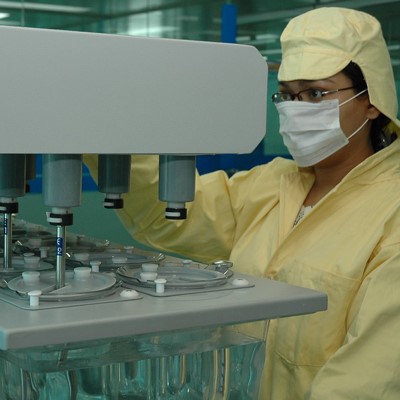views
Introduction:

In an age where global environmental sustainability is imperative, various industries are reassessing their practices to diminish their ecological impact. The pharmaceutical sector, a crucial component of healthcare, is no different. This article explores the proactive steps taken by pharmaceutical companies to incorporate sustainability into manufacturing, packaging, and operations to lessen their environmental footprint.
I. Sustainable Manufacturing Practices:
A. Green Chemistry Initiatives:

In the realm of sustainable manufacturing practices, pharmaceutical companies are demonstrating a growing commitment to green chemistry principles. This strategic shift underscores a conscious effort to prioritize environmentally friendly raw materials and processes throughout the drug manufacturing lifecycle. By opting for greener alternatives, companies aim to reduce the ecological impact of their operations while promoting responsible resource utilization.
Specific examples abound of innovative applications of green chemistry in drug manufacturing, with success stories highlighting the feasibility and benefits of this approach. From the adoption of bio-based solvents to the reduction of hazardous by-products, these initiatives showcase the industry's dedication to fostering a more sustainable and ecologically responsible future. As pharmaceutical manufacturers continue to embrace green chemistry, they not only contribute to the broader environmental sustainability movement but also set new benchmarks for ethical and eco-conscious practices within the sector.
B. Energy Efficiency and Renewable Energy Sources:

The pharmaceutical industry is undergoing a substantial transformation in its stance on energy consumption, placing a robust emphasis on enhancing efficiency and integrating renewable energy sources into manufacturing. This shift is a direct response to the industry's dedication to minimizing its carbon footprint and embracing sustainability. An examination of this trend highlights a unified effort among pharmaceutical production facilities to adopt energy-efficient technologies and practices. Companies are actively investing in cutting-edge innovations to optimize energy utilization, ranging from streamlined equipment to advanced automation systems.
At the same time, there is a growing momentum in pharmaceutical manufacturing facilities towards integrating renewable energy sources like solar and wind power. Case studies in this regard offer valuable insights into the advantages and challenges linked with these sustainable practices. Enhanced energy efficiency not only results in cost savings but also aligns with worldwide environmental objectives. Nevertheless, challenges such as initial investment costs and integration complexities emphasize the necessity for a thorough and strategic approach. As pharmaceutical companies navigate through this transition, they play a role in the broader shift towards greener and more sustainable operations within the industry.
II. Eco-Friendly Packaging Solutions:
A. Reducing single-use plastics:

Pharmaceutical companies are increasingly taking proactive measures to address the environmental impact of packaging, particularly in tackling the pervasive issue of single-use plastics. This imperative reflects a broader commitment to sustainable practices within the industry. In response, companies are exploring alternative packaging materials that are not only eco-friendly but also effective in preserving the integrity of pharmaceutical products.
Initiatives range from adopting biodegradable and compostable materials to utilizing recycled content in packaging. Recycling programs are being implemented to ensure the responsible disposal and reuse of packaging materials, contributing to a circular economy.
Moreover, initiatives to reduce packaging waste encompass inventive design strategies that prioritize efficiency without jeopardizing product safety. As pharmaceutical manufacturers navigate the intricate terrain of sustainable packaging, these efforts highlight the industry's dedication to diminishing its environmental impact and promoting a more responsible approach to material usage across the supply chain.
B. Biodegradable packaging innovations:

The pharmaceutical industry is witnessing a wave of innovation in the realm of packaging, particularly with a focus on biodegradable materials. This emphasis on biodegradability stems from a collective commitment to reducing environmental impact and embracing sustainable practices. Recent advancements in biodegradable packaging materials for pharmaceutical products showcase a range of novel solutions. These materials, derived from plant-based sources or biopolymers, offer a promising alternative to traditional packaging.
By choosing materials that naturally break down over time, pharmaceutical companies contribute to mitigating the persistence of non-biodegradable waste in landfills. These innovations represent a crucial step forward in the industry's efforts to align with global sustainability goals and reinforce a responsible approach to packaging throughout the product lifecycle.






















Comments
0 comment